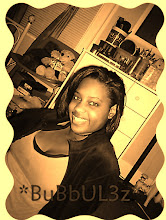 I think that unfair advertising practices are tactics that advertising companies will use in order to get exposure for their product under any means necessary. I think that unfair advertising practices are most often aimed at children because they are the most vulnerable when it comes to advertising. According to Media Literacy by W. James Potter, the FCC has set specific times allowed by advertisers to advertise to children. 12 minutes on weekdays and 10.5 minutes per hour. Often companies will violate these regulations. W. James Potter discusses how young children don’t know the difference between content and commercials. Advertisers have to make a clear statement that they are advertising when it comes to products designed for children. Advertisers will play off the mental vulnerabilities of children. Since children lack maturation which is made up of cognitive development, emotional development, and moral development (Potter, J.W. 2007). Cognitive development means how your brain develops; connections are made, how you learn to understand and process information. Emotional development is a learning process of how you feel about certain things. Different life experiences effect your emotional development. Moral development is further a development than what is right and wrong.
I think that unfair advertising practices are tactics that advertising companies will use in order to get exposure for their product under any means necessary. I think that unfair advertising practices are most often aimed at children because they are the most vulnerable when it comes to advertising. According to Media Literacy by W. James Potter, the FCC has set specific times allowed by advertisers to advertise to children. 12 minutes on weekdays and 10.5 minutes per hour. Often companies will violate these regulations. W. James Potter discusses how young children don’t know the difference between content and commercials. Advertisers have to make a clear statement that they are advertising when it comes to products designed for children. Advertisers will play off the mental vulnerabilities of children. Since children lack maturation which is made up of cognitive development, emotional development, and moral development (Potter, J.W. 2007). Cognitive development means how your brain develops; connections are made, how you learn to understand and process information. Emotional development is a learning process of how you feel about certain things. Different life experiences effect your emotional development. Moral development is further a development than what is right and wrong.The documentary “The Corporation”, by Mark Achbar, Jennifer Abbott, and Joel Bakan, discusses how advertisers will use children to get their parents to by products, which is known as the “nagging effect”. Nagging has caused parents to make purchases they wouldn’t have made otherwise. Advertising corporations use this to their advantage. If they can create nag worthy items then their products will sell well. According to “The Corporation”, “marketers are playing to development vulnerabilities [of children].” Advertising companies know that today’s children are “tomorrow’s adult consumers.” This means they need to understand what type of products they will by now in order to predict products for the future. “Build the relationship now and you’ve got them as an adult.” This means the advertising companies create wants in consumers so they keep buying and needing their products. Sometimes companies don’t follow the rules and are fined. For example, “Viacom was cited for 600 violations in one year and fined $1 million. Viacom blamed the problem on a human error (Shiver, 2004)” (Potter, W.J., 2007).
I think that it is important to make sure the line between commercial and TV show aren’t crossed. Host selling is also prohibited by the FCC. “Host selling is the use of a character from a TV show being the product spokesperson for products advertised in ads inserted into that program” (Potter,W. J., 2007). This means that within a show a certain product is clearly being advertised by a main character. If TV shows used characters rather than commercials people especially children would base their consumer decisions on whether or not the character liked the product or not. It is up to the advertising industry to create commercials to convince mass audiences to use their product. As with other unfair advertising practices some companies simply don’t follow the rules. “Disney was fined 500,000 and blamed the problem on a human error (Shiver, 2004)” (Potter, W.J., 2007).
Work Cited:
Potter, W. J. (2007). Media literacy. Minneapolis: Sage Publications, Inc.





